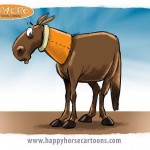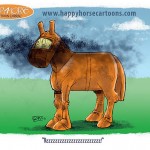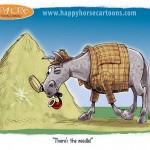
GMO, genetically modified organism, involves the insertion or deletion of genes to create a certain outcome or purpose. Crops already induced are the following: canola, honey, cotton, rice, soybean, sugar cane, tomatoes, corn, sweet corn, potatoes, flax, papaya, squash, red-hearted chicory, peas and sugar beets. Now alfalfa is being added to the list thus spurring this tip.
Crops being genetically modified like corn, sugar beets, soybeans and rice are ingredients commonly found in equine grain mixes and pelleted feeds. Beet pulp may be found in processed feeds also but it is often used in addition to the ration for fiber and calories. The introduction of GM crops has had an impact on the equine diet but not quite as much as the genetically modified alfalfa will have.
Genetically modified crops are generally altered for chemical herbicide application. The crop may be sprayed with a plant killing chemical to eliminate weeds but will not kill the crop itself. For the farmer they need to purchase the seeds and purchase the correct chemical herbicide that the seed has been genetically modified for to withstand or survive its application. It’s much like having to purchase a specific bolt to fit a specific bicycle to match a specific bicycle tire. The company makes additional income without allowing customers to utilize a standardized item.
A farmer’s freedom is lost from there on. Once a GM seed has been grown in their soil, there is no turning back. Additionally, every farmer in the neighborhood will more than likely have GMO contamination in their crop whether they wanted it or not. This in itself is leading farmers into serious issues with the chemical company and/or any farmers attempting to grow organic.
Continue reading Tip of the Week – The Dangers of GMO, Genetically Modified Organism








